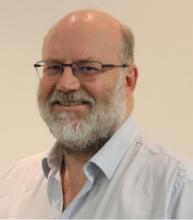Abstract
The runtime boundaries between applications and the cloud are shifting from virtual machines to containers and functions. The integration boundaries are moving away from pure data access to one where the mechanical parts of the application are running within the cloud. This new architecture commoditizes the full application stack, allowing developers to focus on the business logic by offloading integration logic and management responsibilities to cloud services.
In this talk, we will look at the intersection of cloud-native technologies such as Dapr with developer-focused cloud services. We will discuss how this evolution enables migrating, porting, and reusing not only applications, but also patterns, skills, and operational practices. Join us to learn how to take advantage of the latest cloud-native technologies and practices to build scalable, flexible, and portable applications.
Interview:
What's the focus of your work these days?
I am a Product Manager at Diagrid where we are working on building services for developers based on open source technology and I lead the product team, so I set the direction for the strategy and roadmap. That basically means a lot of investigation into how open source and cloud technologies change the way developers are building distributed applications. I mean that is from local developer experience to messaging, event-driven interactions, service orchestration, resiliency, high availability, all from the point of view of a developer.
What's the motivation for your talk at QCon London 2023?
I've been an engineer, consultant, architect, and product manager in the span of a decade and I've seen basically really great monolithic applications, microservices functions, Kubernetes, Amazon Lambda, and now I see event services such as Amazon Event Bridge and other similar ones, which is basically a modern take on the old idea of ESB.
So my talk is really about looking at the evolution of the application architecture and describing how it is changing and where it's headed. These new apps will be blending with the cloud services at much deeper levels than before, and it'll be probably an injustice just to call them microservices. The whole definition of microservices is changing slightly.
How would you describe your main persona and target audience for this session?
I would say that the tech leads and architects that make technology choices that set the direction within their organization in terms of best practices and what patterns to adopt and trying to come up with solutions that will last longer.
Is there anything specific that you'd like people to walk away with after watching your session?
I would say this is something that excites me, which is stepping back and understanding the direction of change that is happening, and to use that to make more guided decisions within their organization towards one that will last longer and, of course, cause less disruption internally.
Speaker

Bilgin Ibryam
Principal Product Manager @Diagrid, Co-author of “Kubernetes Patterns“, Previously Architect @RedHat
Bilgin Ibryam is a technical product manager at Diagrid, where he focuses on developing tools to enhance developer productivity. Prior to this role, Bilgin served as a consultant and architect at Red Hat, where he successfully led teams in the design and implementation of cloud-native applications. He is a member of the Apache Software Foundation, and has co-authored two books on Kubernetes Patterns and Camel Design Patterns. Bilgin enjoys sharing his knowledge and experience through writing, blogging, and speaking at conferences, sharing his insights on cloud-native development and other related topics.








